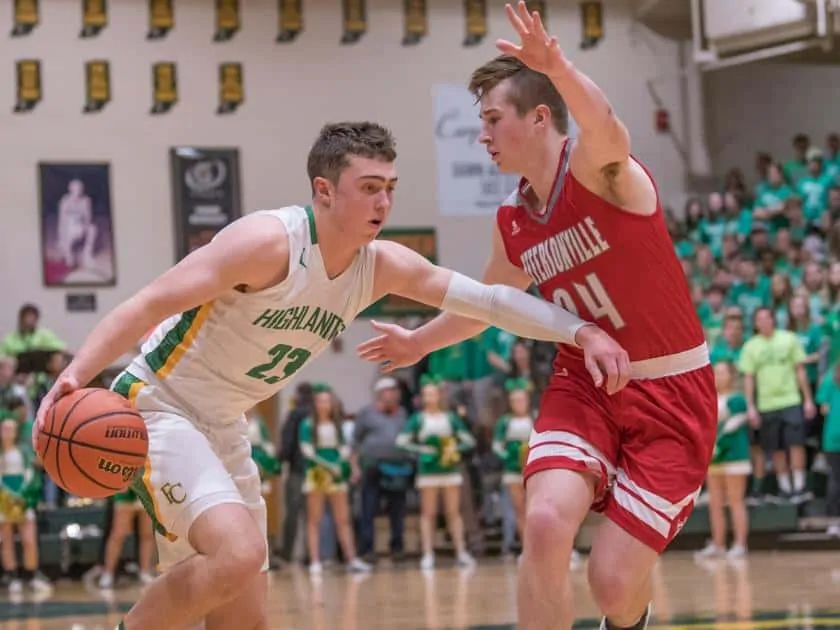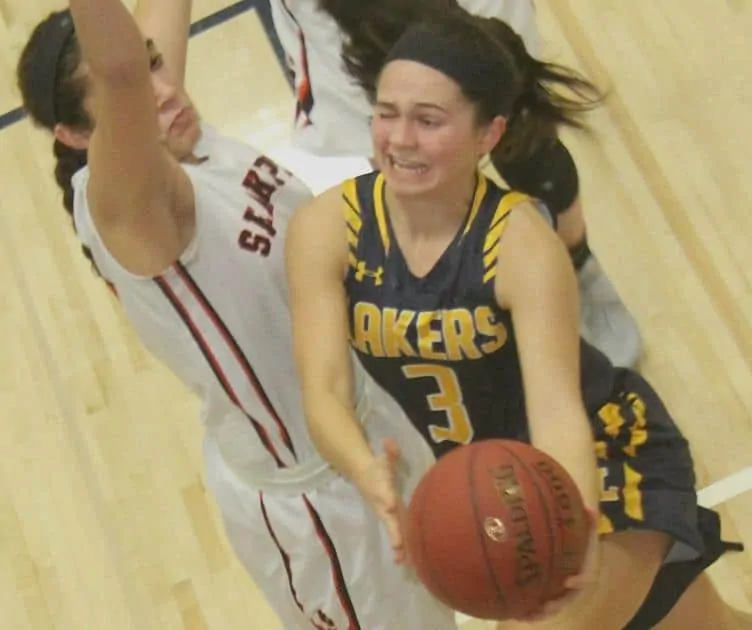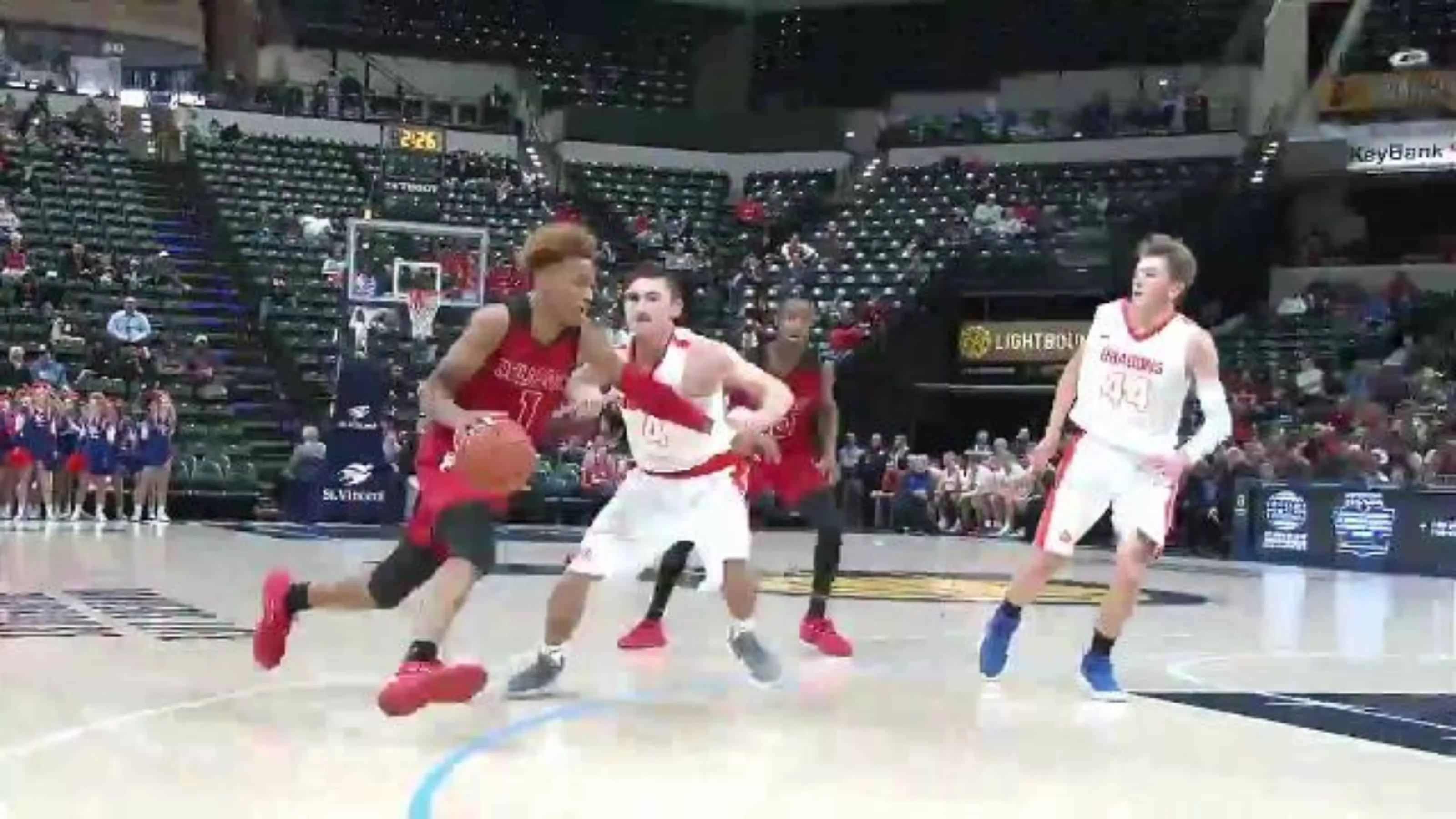Wimp and Sonny. Barkley and Buck Johnson. Batman and Robin. A brief history of Alabama-Auburn hoops.
Love. It’s so close to hate, it’s almost indistinguishable. But this is how it was for the two of them. Love and hate. Life and death. Joy and anguish.
— Melissa de la Cruz
In the mid-1980s, Alabama head basketball coach Wimp Sanderson peeled open a letter that was postmarked “AUBURN, ALABAMA.” It was the week of the Auburn game, and Sanderson alerted his team that he had received a letter from none other than Charles Barkley, the rim-ravaging power forward from Auburn. Jim Farmer, a sophomore guard from Dothan, listened intently as Sanderson read the letter aloud, which said something to the effect of, “We are going to kick your tails when you come down here.” Farmer believed every word.
Several years later, when Farmer was playing in the NBA, he began to reflect on the dubious letter. “I was like, (Barkley) didn’t write no letters to Alabama … that’d be stupid!” Farmer said. “Wimp had all kinds of unique ways to get you fired up. It was always during the Alabama-Auburn games, for sure.”
“It was a different week. We locked up the doors. We closed up practice. I know that one game is not anymore important than the other game, but it was to me.”
Wimp Sanderson on playing Auburn
When asked about the caper, Sanderson says to tell Farmer he “denies having any part of it.”
Alabama, in addition to being a football-mad state, was, during the 1980s, a closely-knit community. Though athletic allegiances were harshly divided, both Alabama and Auburn fans dined at the same restaurants, toured the same shopping centers, and vacationed in the same beachy venues. It was a time of AmSouth Bank, I-95 radio with Mark & Brian, and Parisian department store. Folks arrived in droves to taste the Cantonese cuisine of Joy Young restaurant at Brookwood Village. Commercials boasted the wacky duo at Jim Skinner Ford, where the tagline was “A hundred dollars says we’ll beat your best deal — regardless!” and Country Boy Eddie woke us up with his famous mule call. Football remained the bell cow, but college hoops was emerging as a respectable bovine in the grading competitions of Alabamians.
Nearly 30 years have drawn by since this Golden Age of Alabama-Auburn basketball, when Alabama’s Wimp Sanderson and Auburn’s Sonny Smith toured the sidelines and enlivened press conferences with their slapstick humor. Newspapermen, including an eager reporter with the Birmingham Post-Herald, Paul Finebaum, gathered lustfully around the two coaches, snickering, waiting on the bizarre. Sonny and Wimp, serving up their spectacular, double-fisted comedy, did not disappoint. “It just seemed like there was a quirkiness about Sonny and a quirkiness about me that when you went to a press conference in Birmingham — we didn’t have on silk suits — but people came to listen because they weren’t sure what we were going to say,” Sanderson said. “They came to listen to Sonny ’cause he’s funny. They came to listen to me because they weren’t sure what I was going to say. I might say something worth writing. I’m liable to say anything.”
Behind this humorous façade, both men were fierce competitors. When Smith arrived at Auburn in 1978, the team had dropped 11 out of the past 12 games to Alabama. For the first few years, nothing changed. Smith’s teams continued to lose to Alabama until Barkley arrived in 1981. “When I came to Auburn, it was very evident that Alabama controlled the state of Alabama in recruiting,” Smith told SDS, “and I wanted to get it on a plain where we were making strides. Not even it up, but making strides where we could get players.”
For Smith, the recruiting ecosystem was even further disrupted when Gene Bartow bolted from UCLA to become the head coach at UAB in 1978. Eventually, recruiting in the state of Alabama became a three-headed monster, with UAB, Alabama and Auburn vying for top in-state talent. When asked if the recruiting battles were civil, Sanderson spewed, “Crap no, it wasn’t civil.”
Historically, the Alabama-Auburn basketball rivalry had been one of streaks. The Tide dominated Auburn from 1948-58, and Auburn dominated Alabama from 1958-71. As an assistant coach at Alabama, Sanderson watched with distaste as Auburn took 16 games (to Alabama’s measly 4) in the decade of the 1960s. But beginning in 1972, Alabama seized the rivalry by the throat, winning 18 out of 19 contests and establishing itself as the preeminent program in the state. Alabama’s success was based largely on Sanderson’s ability to lure talent to the Capstone, including Reginald “Mule” King, Charles Cleveland, Leon Douglas and T.R. Dunn.
When Sanderson took over in 1980, fans expected — if not demanded — him to sign prep sensations Ennis Whatley and Bobby Lee Hurt. Sanderson, and no one else for that matter, hadn’t anticipated that the top prospect in the state — a beefy 300-pounder from Leeds — to be flying under the radar.
The Chase for Sir Charles

Photo courtesy of Auburn Athletics.
As the story goes, Herbert Greene, an Auburn assistant, initially had his eye on another Leeds player and barreled up Highway 280 to watch the Green Wave. “So he goes to see this kid at Leeds,” Smith recalls, “and he comes back and says, ‘They’ve got this kid at Leeds that can play for anybody if you can get some weight off of him.’”
Greene was a master at evaluating talent and had Smith immediately convinced. He was even more convinced the first time he watched Barkley play. “The ball went up on the backboard and he goes and gets it and throws it to midcourt before he ever hit the floor,” Smith said. “And I said, ‘We’ve got to have this kid.’”
At the time, Auburn was the first program to discover this unlikely gem; no one was recruiting Barkley and he was Auburn’s to lose. “We had him. He was coming to Auburn, ’cause we were the first people that offered him,” Smith said.
“So he goes to see this kid at Leeds and he comes back and says, ‘They’ve got this kid at Leeds that can play for anybody if you can get some weight off of him.’”
Sonny Smith, recalling the first time he heard about Charles Barkley
But later that year, Barkley matched up with the 6-9, 242-pound Hurt of Butler High — and dominated him. “And everybody in the world goes after (Charles),” Smith remembered.
Sanderson was now in a precarious position. If he didn’t sign Hurt, the Alabama fan base would become detached from its moorings. But if he missed out on Barkley, he would lose the best player in the state. “The rumor was that I was getting Bobby Lee Hurt, but all it was was a rumor. I ain’t got Bobby Lee Hurt yet,” Sanderson recalls. “Charles Barkley wanted to go where he could play instantly. Right off. He wanted to start right then.”
The Barkley recruiting saga played out like this: Bartow had two returning postmen (no good), Auburn had the luxury of no returning postmen (good), and Alabama supposedly was getting Bobby Lee Hurt. As Sanderson was deciding on how he was going to make inroads, he eventually finagled a meeting in Barkley’s home. “It’s Charles, my assistant, myself, and Charles’s mother,” Sanderson describes. “In the room adjacent to us is Charles’s grandmother, who’s taking in all of the conversation.” After an exchange of pleasantries, Sanderson begins knifing UAB and Auburn. Suggesting he “never got any campus life” by going to a school in his hometown, Sanderson was trying to plant a seed in Barkley’s mind that UAB was not an attractive option. Then Sanderson turned to Auburn. “It’s a lot, lot closer to go to Tuscaloosa than Auburn,” Sanderson told Charles. “You go to Auburn for a 7 o’clock game, you don’t get home ’til midnight.”
Charles’s grandmother, hanging on Sanderson’s every word from the next room, interrupted: “Coach, it’s just as close to Auburn over the mountains!”
“I punched my assistant and said, ‘let’s get out of here,’” Sanderson said. “Grandmothers are real powerful.”
Sonny and Wimp: The odd couple of rivals
Though the recruiting wars could be contentious, behind the scenes, Sonny Smith and Wimp Sanderson liked each other. Both were folksy Southerners — Wimp from Florence, Ala., and Sonny from Roan Mountain, Tenn., — and had played at smallish Division I schools. They met when Sandersn was an assistant at Alabama under C.M. Newton and Smith an assistant at Virginia Tech under Don DeVoe. Their paths crossed when they were both hot for a 6-6 forward at Alabama Christian College named Charles “Boonie” Russell. A friendship soon developed.
Serendipitously, Sonny and Wimp became the headmen at Alabama and Auburn within two years of one another, facilitating a seductive theater that has not been mimicked since. In his autobiography, “Plaid and Parquet,” Sanderson says that the two men played the role of the “odd couple” — Sonny the smiling hillbilly and Wimp the frowning grouch. “He’s a delightfully funny guy, without trying to be,” Wimp wrote. “Meanwhile I was considered an uptight grimacing type coach with the weight of the world on me.”
“We had fun together and were both a little crazy,” Sonny adds.
“It just seemed like there was a quirkiness about Sonny and a quirkiness about me that when you went to a press conference in Birmingham — we didn’t have on silk suits — but people came to listen because they weren’t sure what we were going to say.”
Former Alabama coach Wimp Sanderson
Though Wimp held no distaste for Sonny personally, he remembered the overlong domination of Auburn in the 1960s and purposed to have his teams thoroughly prepared when Auburn came a-calling. “When we played ’em, our guys were ready to play — you can bet your sweet booby on that,” Sanderson said. “It was a different week. We locked up the doors. We closed up practice. I know that one game is not anymore important than the other game, but it was to me.”
Players, recalling a different feel of Auburn game week, were often inquisitive to the sour coach’s mood. “How’s he acting today? What have you heard today?” were questions posited to Tide manager Joe Corona.
And, God help them, if Alabama ever lost to Auburn, players could expect to conclude their evening with the niceties of a dog-eat-dog practice session. “When we got beat, we came back and went to the little gym,” Sanderson said. “Oh yeah. One o’clock in the morning.”
From 1981-86, Sonny and Wimp traded punches and the games between the two schools were essentially even. Enmity wasn’t merely reserved for the two programs as a whole; players felt the trickle-down effect as well. Underscoring the bloodthirsty, unaffectionate rivalry between Chuck Person and Buck Johnson, Smith said, “It was almost like an individual battle and the rest of the team playing each other. Those two guys would go at each other so hard, it was really something to see.”
Iron Bowl fans will remember 1985 as the year of Van Tiffin’s immortal kick, but a game on the hardwood just months previous was every bit as good as the donnybrook at Legion Field. On March 9, 1985, Alabama and Auburn met at the BJCC for the SEC basketball championship, the first such occasion in the history of the two programs. Before the tournament, Smith had plans to leave Auburn and his exodus from The Plains seemed to be a mere formality. Miraculously, Auburn stomped through the tournament as an 8-seed and was in the championship game for the second time in as many seasons.
The game turned out to be a classic. Alabama dominated early, but Auburn had pulled to within one, 30-29, at intermission. In the second half, the Tide stretched the lead to six twice, but Auburn battled back to keep the game close. Alabama’s Farmer, who had played brilliantly in the regular season, simply could not get his shot to fall, and in the waning moments, missed three crucial free throws that might have put the game out of reach. Auburn pulled even with the Tide on a Frank Ford jumper, forcing overtime.
In the extra period, Auburn won the tip and, utilizing a stall game not encumbered by the nuances of a shot clock, ticked off two minutes. By the 1:00 mark, neither team had scored. Eventually Auburn guard Gerald White sunk two free throws and Alabama came up empty when Mark Gottfried was whistled for a traveling violation with 5 seconds left to play. Two headlines in The Tuscaloosa News told the story: “Sonny will leave AU with a smile” and “Tide loses heartbreaker.”
Smith eventually had a change of heart and returned to Auburn in 1986, but the balance began to tip in Alabama’s favor in the late 1980s. For Alabama, Johnson continued to be his usual excellent self, but a reinvigorated Farmer and the blossoming of Derrick McKey and Gottfried helped Alabama to a 24-9 record in 1985-86. ‘Bama won the conference tournament in 1987 and 1989, but to Sanderson’s chagrin, could never get past the regional finals in the NCAA Tournament.
Auburn, on the other hand, enjoyed respectable seasons in 1986-87 and ’87-88, fueled by the pivot play of Chris Morris and Jeff Moore. But after a 9-19 season in 1989, Smith was forced out and the Golden Age was over. Three years later, Sanderson was fired.

Robert Horry averaged 15.8 points for Wimp Sanderson’s final team. Photo courtesy of University of Alabama Athletics.
The mantle was now left to Tommy Joe Eagles and David Hobbs, descendants who could not replicate the same energy as Sonny and Wimp. The Tide and Tigers loped through the 1990s in relative mediocrity, as the importance of the game was stifled. The hiring of Cliff Ellis at Auburn in 1994 and Mark Gottfried in 1998 seemed to resuscitate the rivalry, but the aroma of marked inequality between football and basketball still lingered.
Now Avery Johnson and Bruce Pearl have been tasked with stirring enthusiasm and winning games at their respective schools, and both have done a commendable job. From afar, both Wimp and Sonny have been impressed with the coaches’ charisma and ability to draw support from the community. “I think at Alabama basketball, you’ve got to connect with the fans,” Sanderson said. “And I think (Avery) has connected with them. He’s gone out of his way to have a home court advantage. I think he’s done a good job recruiting. I think he’s run the basketball program the way it needs to be run and be successful. My hat’s off to him for what he has done.”
Smith says that, in addition to Pearl’s ability to promote, an overlooked skill possessed by Pearl is his ability to teach the game of basketball. “He’s an outstanding practice coach,” Smith said. “He teaches the little subtle points of the game to players that make a difference. His practices will go right amongst all of them, and I’ve been to Mike Krzyzewski’s practices.”
Wednesday date for the ages, starring new cast, old friends
Fans are now coming back to the arenas, and Alabama and Auburn are programs that are once again relevant in the national biosphere. Recently, ESPN’s Joe Lunardi projected Auburn as a one-seed in the NCAA Tournament, and Alabama, sitting at 17-10 with five wins over Top 25 teams, seems to be a tournament lock. Still it seems almost implausible to think that the last time both schools were ranked in the Top 25 when they faced one another was Jan. 22, 1987, when 12th-ranked Alabama met 17th-ranked Auburn at Coleman Coliseum in Tuscaloosa.
This Wednesday in Auburn, the two teams will clash in the biggest game this rivalry has seen since the days of Wimp and Sonny. Auburn is ranked No. 12, and leads the SEC. Alabama is receiving votes, and trying to sweep the season series.
“I think Auburn and Alabama are the two best teams in the league right now,” Smith told SDS. “Auburn may be in a position to win a championship, and Alabama may be in a position to be one of the best teams in the country.”
Wimp agrees. “I think they are better than any of the other 12 in the league,” he said.
Like 1987, the storyline will be about friendship. The two phenoms, Alabama’s Collin Sexton and Auburn’s Jared Harper, are on opposing sides of the ball, but their roots trace back to the same court in Mabelton, Ga. In high school, Sexton and Harper played on the same team at Pebblebrook High School, where head coach George Washington referred to backcourt duo as “Batman and Robin.” Harper is a year older. During their time at Pebblebrook, both players averaged over 30 points per game and led the Falcons to a berth in the 2016 Georgia 6A state championship game, falling short to Westlake High, 68-58.
Washington remembers Sexton and Harper, the pair of competitors often staying late in the cold Georgia evenings to play 1-on-1, as gym rats. “Collin initially could not beat Jared,” Washington told SDS. “We would go all night waiting on Collin to get a win. If he won, he had to stay longer because he said he wanted to make sure it wasn’t a fluke.”
Washington said that Sexton and Harper reveled in the denotation of “underdogs.” “People told Jared he was too little all his life,” Washington said. “He was always on a mission to prove people wrong about his size. When people told (Collin) he couldn’t do something, Collin had the mentality of ‘I’m going to prove you wrong. Right here, right now, let’s go.’”
The two players fed off one another and worked tirelessly at their game. They were selfless in their approach. If Jared was hot, Collin would serve him the ball. If Collin was hot, Jared would dish it. From Jared, Collin learned the tactical aspects of the game: how to read help-side and defenders’ feet. From Collin, Jared learned the meaning of ultra competitiveness.
Washington could not have predicted that the two boys would ultimately end up at rival schools, but he could not be happier that both achieved the kind of success they’ve had at Alabama and Auburn. And whenever the boys come home, Washington says, they find themselves back in the gym. “Jared will call Collin or Collin will call Jared — ‘Hey! I’m going to the gym.’ And they will come in and go to war,” he said.
Come Wednesday, Washington will be in attendance at Auburn Arena, but he’ll have to take the position of Switzerland because of his relationship with his former players. “I just wear a neutral shirt. I’ll wear black or gray,” he says. “I tell them, ‘I hope it goes into quadruple overtime and no one loses.’”

Photo Credit: USA Today Sports.
So it seems that in many ways, Alabama and Auburn will be indelibly linked with the burden of friendship, though it is a rivalry that seems to rip apart more than it does pull together. It is a rivalry that divides towns, divides schools, divides families. Like it or not, the two schools are bound eternally in a cosmic duel that only seems to dissipate when coaches retire or players hang up their sneakers.
Sonny and Wimp ended up doing a radio show together for six years, and all of Alabama laughed with them. There was something about an Alabama and an Auburn man coming together that allowed the state to breathe. Every year, they speak at many of the same events, and needle each other at the podium. “I’d tell one-liners and Sonny would tell one of his stupid stories,” Wimp said.
“It was almost like a Vaudeville act,” Sonny laughs.
After blistering one another’s butt for two hours, they would leave the event in the same car.
On the court, the pair took the rivalry to another level, but not in an overly contentious way. The great oeuvre of Sonny Smith and Wimp Sanderson was that they elevated the rivalry to unprecedented levels, but did not let the vitriol between the schools consume their friendship. In the end, the mutual respect they had for one another has carried them. “Hey. The one thing about that rivalry was Wimp,” Sonny says about his friend. “I hope someday people will realize what Wimp did for Alabama basketball. Those are Hall of Fame credentials that he has right there.”
While being interviewed, Wimp stresses that he doesn’t want anything negative to be written about Sonny. “Sonny is my friend,” Wimp says. “We’ve had a good rapport with each other. Whoever won, won. Whoever lost, lost. Win or lose, we shook hands and went on our way. And if Wednesday night reminds me of the ’87 game, then I’m OK with that.”
Whether or not this feels like 1987, the truth is that basketball is back in the state of Alabama, and it’s good thing. Things might have changed, it might not be Sonny and Wimp, it might not be as off-the-wall as it used to be, but in a state suffering from post-football woe, it’ll more than do.
Just don’t expect Avery Johnson to receive any letters postmarked “Auburn.”
A Civil Rivalry: Auburn vs. Alabama and the battle for hardwood supremacy
By Al Blanton
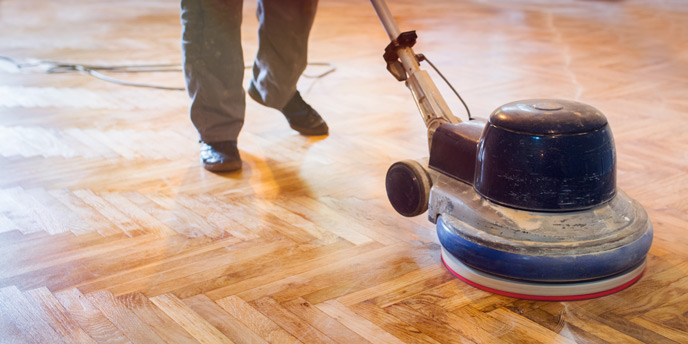



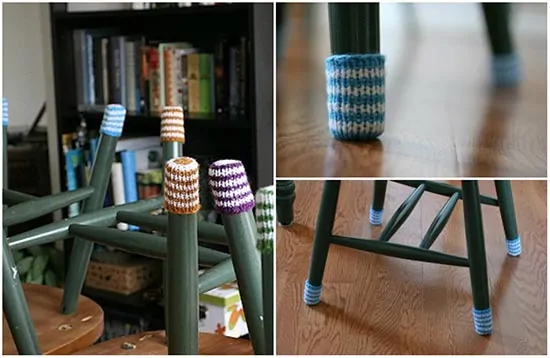

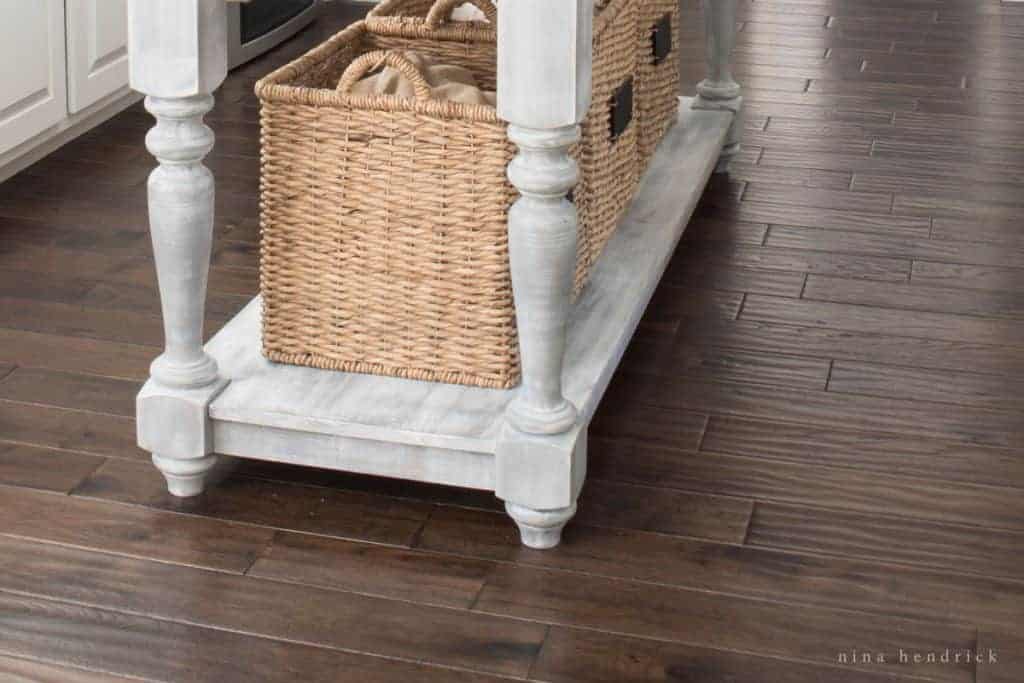 Today I’m tackling a question that I’m asked about a lot- the pros and cons of having dark hardwood floors. When it came to choosing the new flooring for our home, I always had a very clear vision of having extremely dark hardwood floors.
Today I’m tackling a question that I’m asked about a lot- the pros and cons of having dark hardwood floors. When it came to choosing the new flooring for our home, I always had a very clear vision of having extremely dark hardwood floors.